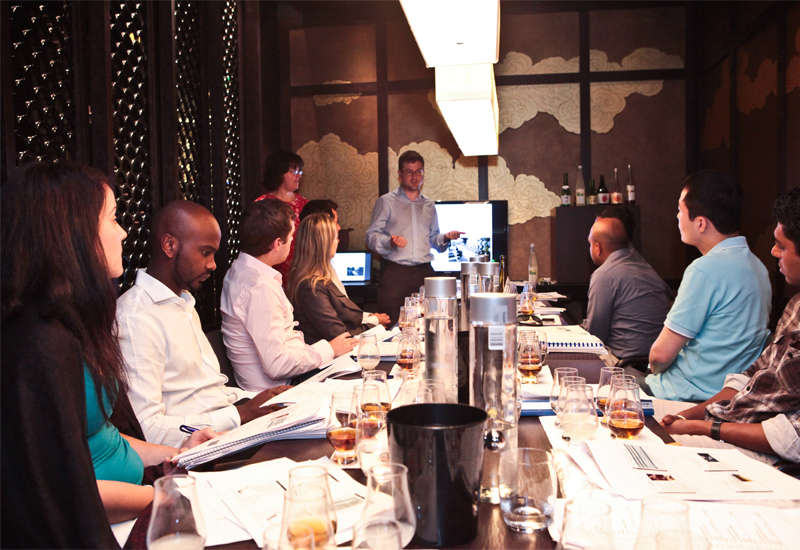IMPLEMENTATION
The course runs over three days — two-and-a-half of which are dedicated to theoretical and practical study, and then an exam is held on the final afternoon.
On the first day, students learned about production and label terms, how to read sake labelling, factors influencing types and varieties of sake, and were introduced to sake tasting.

| Advertisement |
On day two, the team learned about other varieties of sake, including yeast, shubo, and moromi, as well as sake pressing and finishing options and storage.
The team was also introduced to speciality sake categories and conducted a practice tasting. On the final day, the participants were educated on the global sake industry, the perception of the beverage outside Japan, and how to talk about and sell sake.
“The course is broken down into sessions. And it’s very logical — it looks at what sake is made from and how it’s made and looking at how the brewer’s decision affects the final style and character of the sake. So by the end of the course, people can really identify the different styles and can understand how they were made that way — what makes them taste like that. And obviously [it has] given people a good awareness of sake labelling and regulations and storage and all of the aspects around that — so it’s quite in-depth,” says Parkinson.
The first Level III Sake programme in the Middle East was attended by 12 people, nine of whom were from the three Hakkasan outlets in the region. Hakkasan also invited representatives from African & Eastern and MMI to participate in the course and learn more about the types of sake the restaurants are looking to serve. Over the course of three days, the team tasted more than 40 sakes, which were all assembled in Japan by the WSET and then shipped over.
IN PRACTICE
Among the Hakkasan staff attending the course was Olivier Gasselin, head sommelier Middle East and Shanghai, who is also a certified programme instructor, and who will continue to train the rest of the team in the region.
“The programme will be rolled out across the region and I will continue to train the remaining sommeliers and bar managers on the course. It is also important for the floor staff to have some knowledge about what they are serving guests, so this course will be an important part of our training programme,” Gasselin says.
Parkinson adds: “I think the key to that is being able to explain [sake] to people because it’s not a very widely known and understood drink. It’s a delicious drink and we know when we serve sake to guests, they tend to find it delicious. It’s something people do want to try, but they don’t know what to order.”
And with the growing demand for sake the team has observed, Hakkasan might even consider allowing a select number of guests to attend the course, or develop a less in-depth course for the general public, based on the demand.









 Search our database of more than 2,700 industry companies
Search our database of more than 2,700 industry companies









